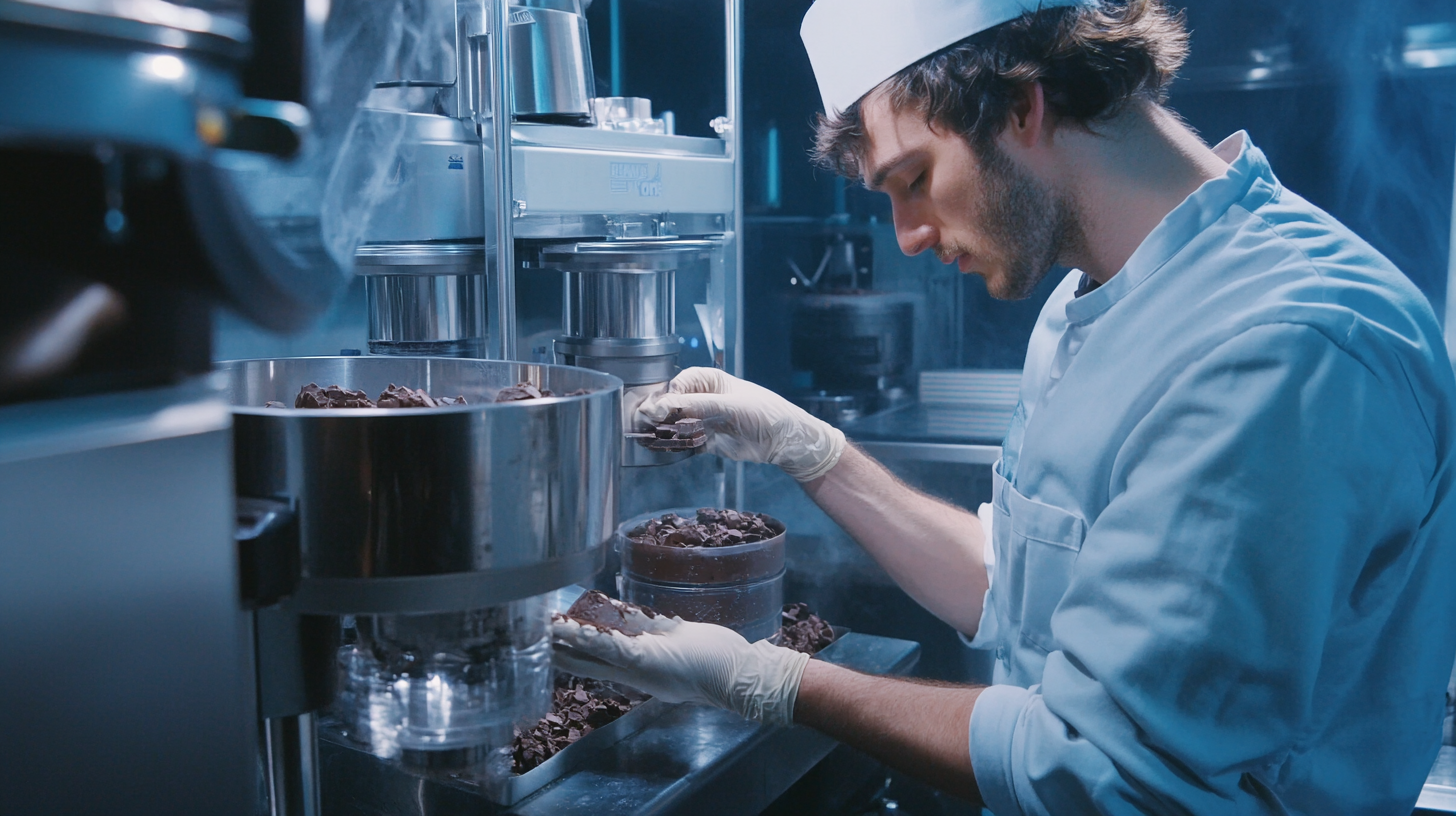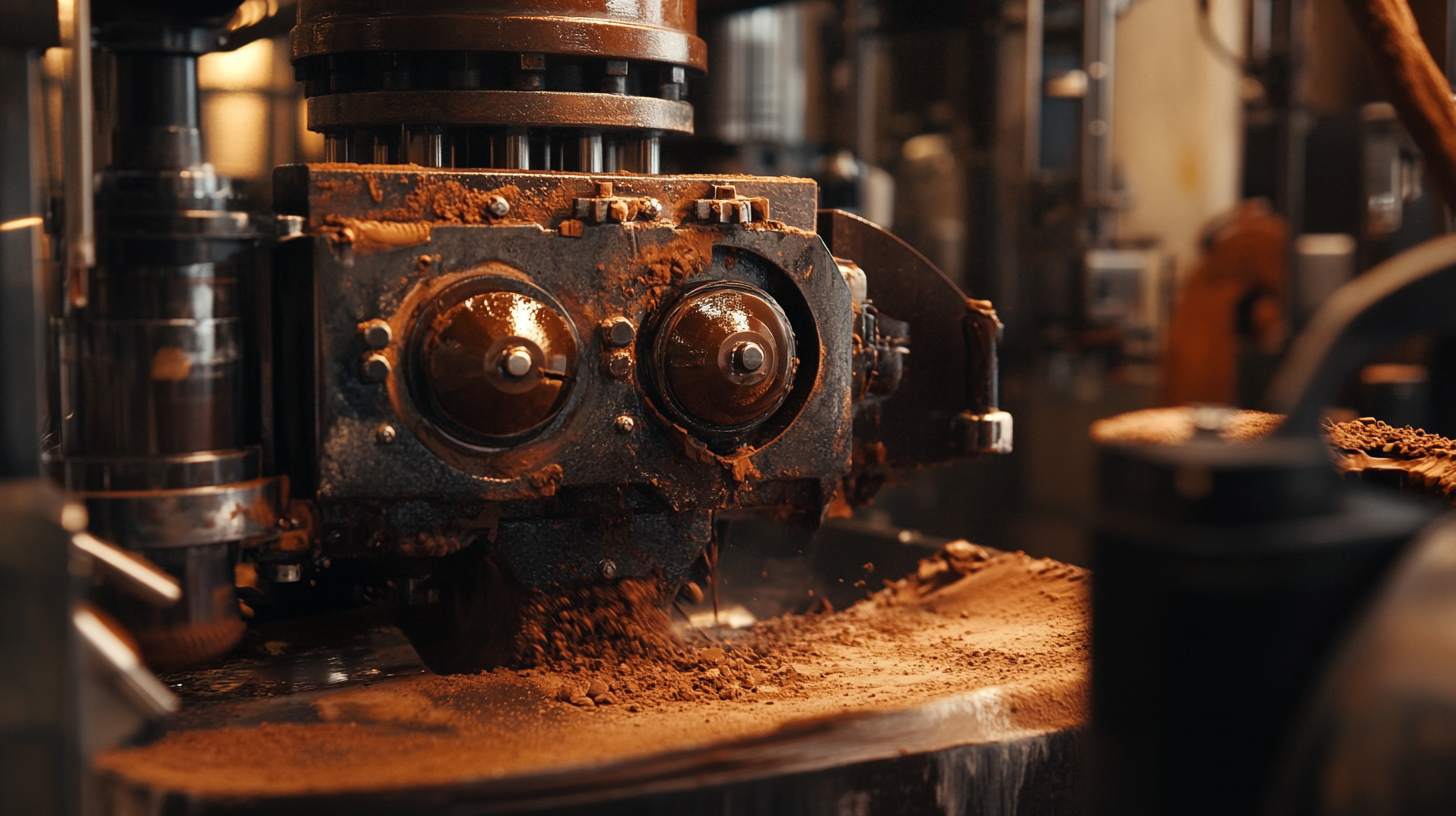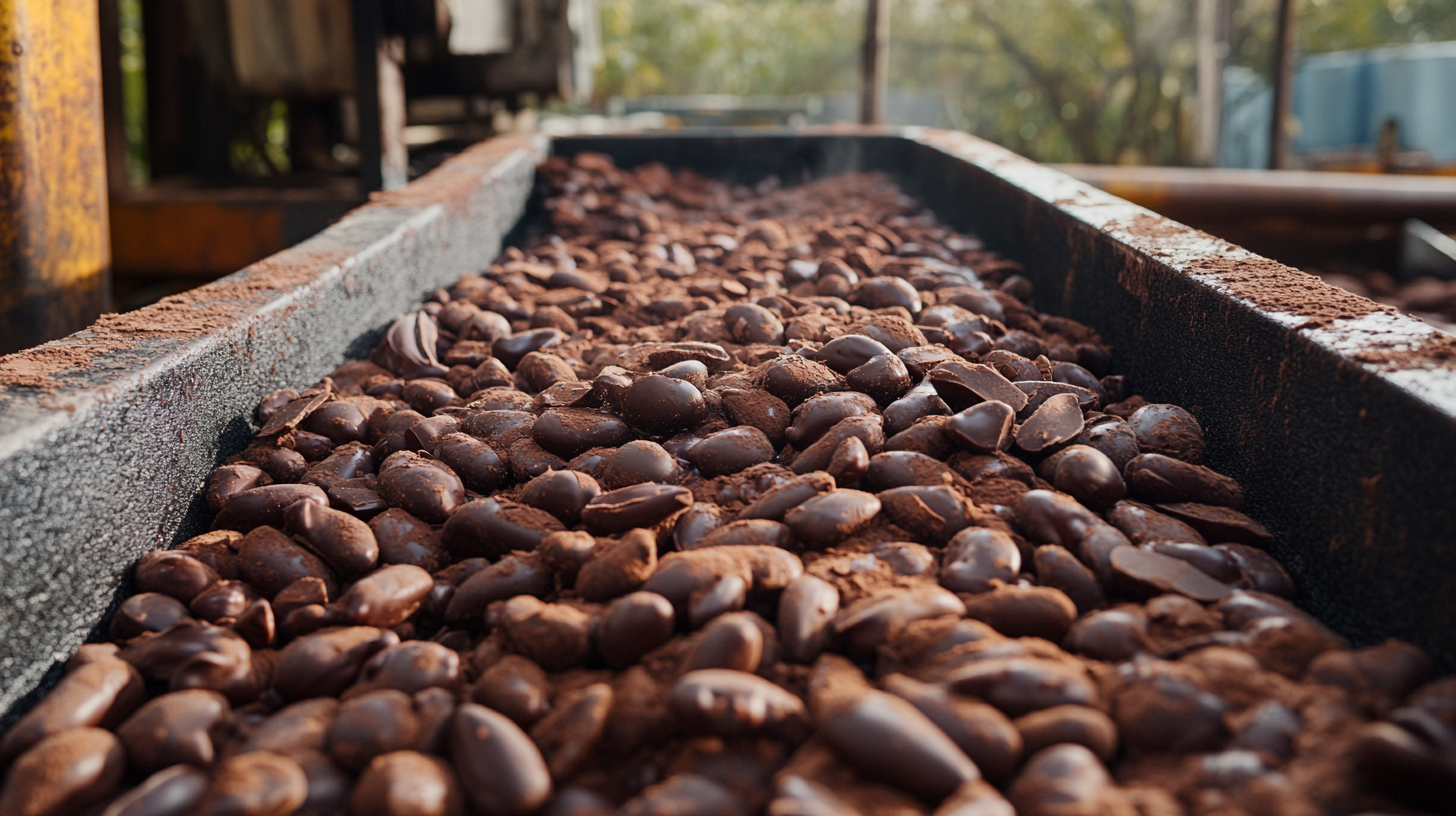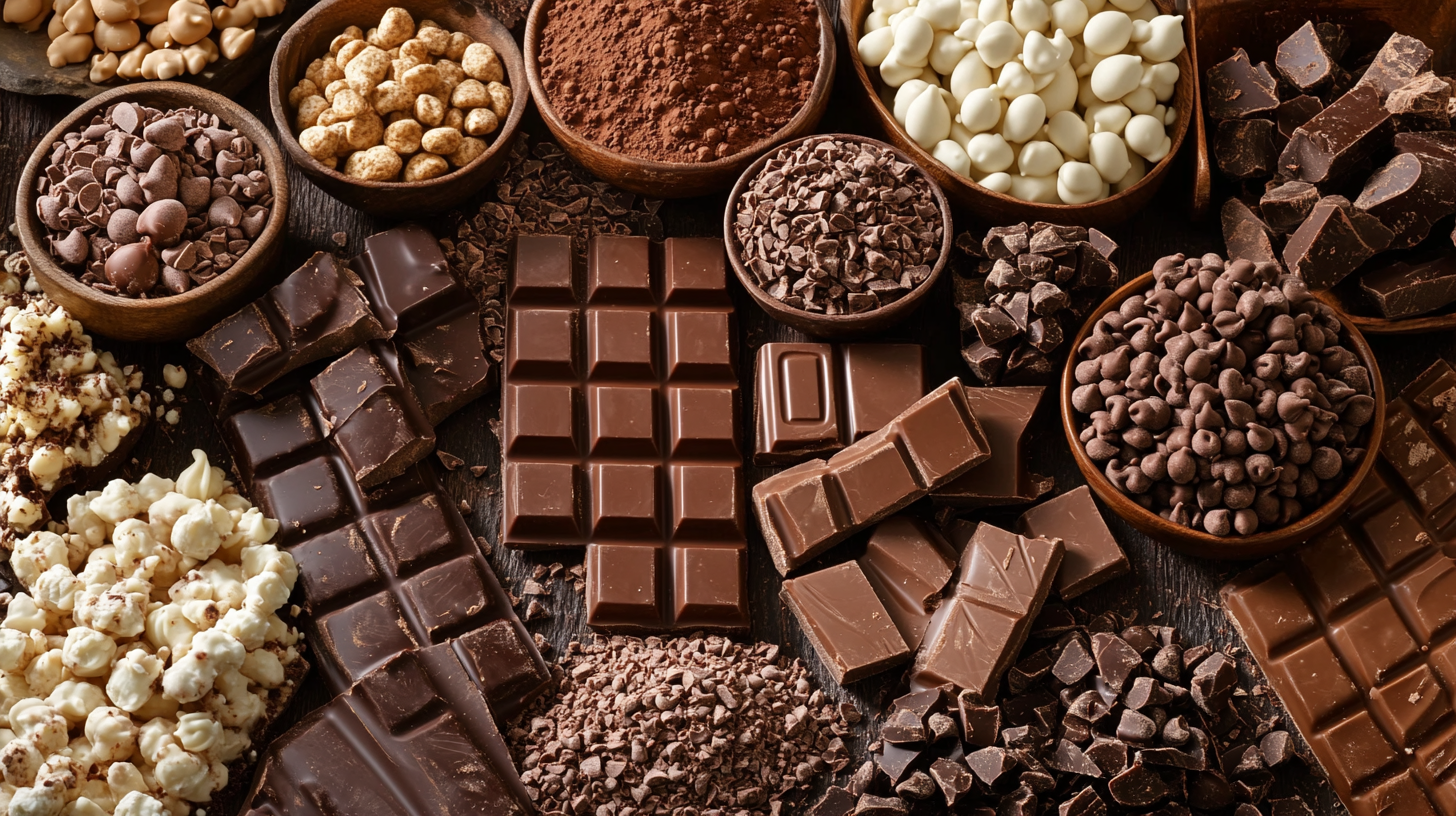Mastering Your Chocolate Production: A Step-by-Step Guide to Using Chocolate Machines
In the world of confectionery, mastering chocolate production can set your creations apart from the rest. Whether you're a burgeoning chocolatier or an established confectioner, the right tools can make all the difference. At the heart of any efficient chocolate production process lies the chocolate machine—a vital asset that streamlines operations and enhances the quality of your products. This guide will help you navigate the intricacies of chocolate machines, from understanding their functionalities to selecting the perfect equipment for your needs.
As the demand for quality chocolate continues to rise, knowing how to effectively utilize chocolate machines becomes essential. Not only do these machines enable you to produce consistent and high-quality chocolates, but they also help you scale your production efficiently. In this step-by-step guide, we will break down the various stages of chocolate production and demonstrate how to maximize the benefits of your chocolate machine, ensuring that you create delectable treats that captivate your customers. Join us on this journey to elevate your chocolate-making skills and achieve mastery in chocolate production.

Choosing the Right Chocolate Machines for Your Production Needs
When venturing into chocolate production, selecting the right equipment is paramount to achieve optimal results. According to the International Cocoa Organization, global chocolate consumption increased by 3% annually over the past decade, driving the demand for efficient and versatile chocolate machines. As production scales up, choosing machines that meet specific production needs is no longer a luxury but a necessity. First, it's essential to assess the type of chocolate being produced. Whether it’s dark, milk, or white chocolate, different formulations may require distinct machinery functionalities. For instance, tempering machines are critical for achieving the desired sheen and snap in chocolate, and data from the Confectionery Manufacturer Association indicates that properly tempered chocolate reduces production waste by up to 15%. Understanding your product's characteristics allows for informed decisions about the necessary machinery, from melters to enrobing machines. Additionally, capacity and efficiency play a significant role in machine selection. A report from Market Research Future highlights that the chocolate machinery market is poised to grow at a CAGR of 5% through the next five years, emphasizing the importance of investing in machines that offer scalability. Producers must consider not only current production demands but also future growth when evaluating options. Factors such as automation levels, ease of cleaning, and maintenance requirements should be balanced against production goals to ensure sustainable operation.

Understanding the Chocolate-Making Process: Key Stages and Equipment
Understanding the chocolate-making process is essential for anyone looking to excel in chocolate production. It involves several key stages, each critical to the development of flavor, texture, and quality. The journey begins with the harvesting of cacao pods, where the cacao beans are extracted and fermented. This crucial step enhances the beans’ flavor profile and prepares them for drying and roasting, which are pivotal in developing the chocolate's final taste.
Once the cacao beans are roasted, they are cracked and winnowed, separating the nibs from the shells. The nibs are then ground into chocolate liquor—a thick paste that serves as the base for various chocolate products. At this stage, chocolate machines play a vital role. Conching machines further refine the chocolate's texture by continuously mixing and aerating the liquor, while tempering machines manage the cooling and reheating processes to stabilize the cocoa butter crystals, ensuring a glossy finish and a satisfying snap.
Finally, the tempered chocolate can be molded into bars, truffles, or other confections. Additional ingredients such as sugar, milk, and flavorings can be incorporated during the mixing phase. The chocolate production process, from bean to bar, is intricate and requires precision in each stage. Understanding and utilizing the right equipment will lead to mastering the art of chocolate-making, allowing producers to create high-quality chocolate that delights consumers.

Essential Maintenance Tips to Keep Your Chocolate Machines Running Smoothly
Maintaining chocolate machines is crucial for ensuring a smooth production process and high-quality products. Regular maintenance not only prolongs the life of your equipment but also minimizes unexpected breakdowns and costly repairs. A proactive approach includes daily checks, weekly cleanings, and monthly inspections to keep everything running efficiently.
One of the essential maintenance tips involves routine cleaning of your chocolate machines. Residual chocolate can build up and hinder performance. After each production run, ensure that all components are thoroughly cleaned with appropriate cleaning solutions. Special attention should be given to areas that are difficult to access. Regularly schedule a deep clean to remove any stubborn deposits that may accumulate over time.
Another key tip is to monitor the machine’s moving parts. Lubricate bearings, gears, and any other parts in need of maintenance to prevent friction that can lead to wear and tear. Additionally, keep an eye on temperature controls and ensure that thermostats are functioning correctly. Fluctuations in temperature can affect chocolate consistency, so be proactive in calibrating these systems regularly.
Finally, don’t forget about the importance of training your staff. Equip them with the knowledge of how to operate and maintain the machines properly. Regular training sessions can empower your team to recognize issues early and handle minor repairs, fostering a culture of care and responsibility around the equipment.

Maximizing Efficiency: Best Practices for Operating Chocolate Machinery
When it comes to chocolate production, maximizing the efficiency of your chocolate machinery is crucial for both output and quality. Recent reports indicate that optimizing production lines can increase throughput by up to 30%, significantly reducing operational costs (Source: Chocolate Manufacturer’s Association 2023). This efficiency is particularly vital in an industry where margins can be tight, and demand for premium products continues to rise.
To achieve this, it's essential to implement best practices in operating your chocolate machines. Regular maintenance is one of the most effective strategies, with studies showing that neglected machinery can lead to a 20% reduction in performance (Source: Food Processing Journal, 2023). Operators should follow a strict maintenance schedule, including thorough cleaning and timely updates of machinery software, to ensure optimal functioning. Moreover, training staff in efficient machine operation can cut downtime dramatically, with some manufacturers reporting a 15% increase in productivity following targeted employee training programs.
Incorporating advanced technologies, such as IoT sensors, can also facilitate real-time monitoring of machinery. This allows for predictive maintenance, helping to prevent unexpected breakdowns. A recent survey found that 65% of manufacturers using IoT technologies noted a significant enhancement in machine utilization rates (Source: Global Industry Analysts, 2023). By harnessing these tools and techniques, producers can not only improve efficiency but also maintain the high-quality standards that consumers expect from chocolate products.
Troubleshooting Common Issues in Chocolate Production Machines
In the intricate world of chocolate production, understanding and troubleshooting potential issues with chocolate machines is paramount for maintaining quality and efficiency. One of the common challenges faced by producers is the seal integrity of packages, which can be affected by various factors such as temperature, pressure, and film material. Proper heat sealing techniques are essential to ensure that products remain fresh and safe for consumers. Implementing detailed inspections and regular maintenance of sealing equipment can help mitigate these issues, preventing costly waste and ensuring product longevity.
As the chocolate industry grapples with ethical concerns, including child labor and environmental impact, it is vital for manufacturers to be proactive in addressing these challenges. The indirect cocoa supply chain poses significant difficulties, making it imperative for producers to scrutinize their sourcing practices closely. By fostering transparency and insisting on sustainable practices throughout their supply chain, chocolate makers can take steps toward making a positive impact on both the environment and social justice.
Machine upgrades also play a crucial role in modernizing production processes. For instance, companies like Moo Free Chocolates are enhancing their operations with advanced packaging technology, which not only improves efficiency but also aligns with the growing consumer demand for ethical and environmentally friendly products. By embracing innovation and being vigilant about the production practices, chocolate manufacturers can navigate the complexities of their industry while ensuring that they produce high-quality, responsibly sourced chocolate.
